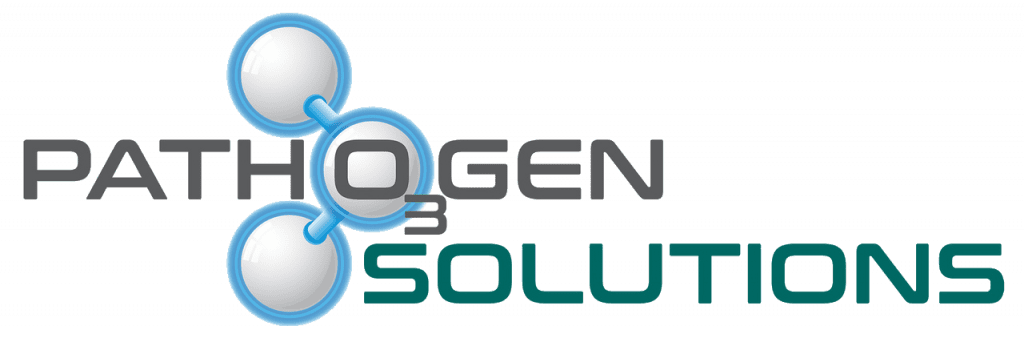Biosafety Best Practices: How UVZone Shoe Sanitizers Enhance Facility Hygiene
Bacteria, Facility, Shoes, UVC
Maintaining a clean and hygienic environment is crucial in various industries, where biosafety measures, championed by Pathogen Solutions, play a vital role in safeguarding the well-being of individuals. While many aspects of facility hygiene are given due attention, one often overlooked area is shoe hygiene. Contaminated shoe soles can serve as vectors for the spread of harmful microorganisms, posing a risk to both workers and the environment. In this article, presented by Pathogen Solutions, we will explore the significance of biosafety practices, delve into the importance of good laboratory practices, and discover how the innovative UVZone Shoe Sanitizers contribute to enhanced facility hygiene by effectively reducing microbial contamination on shoe soles.
Understanding Biosafety and Good Laboratory Practices
Biosafety is a set of procedures and protocols implemented to protect workers, the environment, and the community from exposure to potentially hazardous biological agents. In various industries such as healthcare, laboratories, and food processing, biosafety measures are essential for mitigating the risks associated with the handling of infectious materials. Good laboratory practices (GLP) encompass a range of guidelines and protocols that ensure the quality, integrity, and reliability of laboratory activities. By adhering to biosafety and GLP standards, organizations can maintain a safe working environment and prevent the spread of harmful microorganisms.
The Role of Shoe Hygiene in Facility Hygiene
While hand hygiene and surface disinfection are commonly addressed in facility hygiene protocols, the importance of shoe hygiene is often underestimated. Shoe soles can harbor a significant amount of microorganisms, including bacteria, viruses, and fungi. As individuals move through different areas, these pathogens can be transferred from the floor to high-touch surfaces, increasing the risk of cross-contamination. Recognizing the potential for microbial contamination through shoe soles is crucial in developing comprehensive facility hygiene practices.
UVZone Shoe Sanitizers
UVZone Shoe Sanitizers are innovative devices designed to enhance facility hygiene by effectively reducing microbial contamination on shoe soles. These sanitizers utilize a combination of UV-C light and ozone, offering a chemical-free and highly efficient method of disinfection. UV-C light is a short wavelength of ultraviolet light that has been scientifically proven to destroy the DNA and RNA of microorganisms, rendering them unable to reproduce. Ozone, a reactive gas composed of three oxygen atoms, further enhances the sanitization process by eliminating bacteria, viruses, and fungi. The integration of UVZone Shoe Sanitizers into facility hygiene protocols provides an additional layer of protection against the spread of harmful pathogens.
Effectiveness of UVZone Shoe Sanitizers
UVZone Shoe Sanitizers have demonstrated remarkable efficacy in reducing microbial contamination on shoe soles. In independent laboratory testing, they have been shown to eliminate up to 99.9993% of bacteria, viruses, and fungi within a matter of seconds. The combination of UV-C light and ozone ensures comprehensive disinfection, effectively neutralizing a wide range of pathogens. By incorporating UVZone Shoe Sanitizers into facility hygiene practices, organizations can significantly minimize the risk of cross-contamination and improve overall biosafety.
Benefits of UV Disinfection
The use of UVZone Shoe Sanitizers offers several advantages over traditional chemical-based disinfection methods. Firstly, UV disinfection is chemical-free, eliminating the need for potentially harmful substances and reducing the risk of chemical exposure. Secondly, UV disinfection is highly efficient, rapidly inactivating microorganisms on shoe soles in a matter of seconds. Additionally, UV disinfection does not contribute to antimicrobial resistance, ensuring its long-term effectiveness. Furthermore, UVZone Shoe Sanitizers are easy to use, require minimal maintenance, and provide a visible sign of safety within the facility.
By integrating UVZone Shoe Sanitizers into facility hygiene protocols, organizations can enhance biosafety measures, prevent the spread of harmful microorganisms, and create a cleaner and safer environment for workers and visitors alike. In the following sections, we will delve deeper into the safety considerations of UVZone Shoe Sanitizers, their proper usage, and their potential impact on facility hygiene.
How UV Shoe Sanitizers Work
UVZone Shoe Sanitizers utilize advanced UV-C light and ozone technology to effectively reduce microbial contamination on shoe soles. Here’s a step-by-step breakdown of the shoe sanitization process:
- Placing the shoe on the UVZone Shoe Sanitizer: The shoe is positioned in the designated sanitization area of the device.
- Activating the UV-C light: Upon activation, the UV-C light is emitted, targeting the shoe sole.
- UV-C light exposure: The shoe sole is exposed to the short-wavelength UV-C light, which penetrates the cells of microorganisms and disrupts their DNA and RNA, rendering them unable to reproduce.
- Ozone generation: In addition to UV-C light, UVZone Shoe Sanitizers produce ozone, a reactive gas that further enhances the sanitization process.
- Ozone exposure: The generated ozone interacts with the microorganisms, effectively eliminating bacteria, viruses, and fungi.
- Sanitization completion: After the designated sanitization time, the shoe is removed from the UVZone Shoe Sanitizer, now free from a significant amount of microbial contamination.
Safeguarding Health and Environment
Biosafety measures and good laboratory practices are crucial in various industries for several reasons:
- Protection of workers: By implementing biosafety measures and adhering to good laboratory practices, organizations can minimize the risk of occupational exposure to hazardous biological agents, ensuring the safety and well-being of workers.
- Environmental protection: Proper biosafety practices prevent the release of harmful microorganisms into the environment, reducing the potential impact on ecosystems and public health.
- Prevention of cross-contamination: Effective biosafety measures help prevent the spread of microorganisms within the facility, minimizing the risk of cross-contamination and the subsequent transmission of diseases.
- Compliance with regulations: Adhering to biosafety guidelines and good laboratory practices ensures compliance with local, national, and international regulations, promoting responsible and ethical conduct in scientific and industrial settings.
Safety Considerations of UVZone Shoe Sanitizers
Addressing common concerns regarding the safety of UVZone Shoe Sanitizers:
- UV-C light exposure: UVZone Shoe Sanitizers are designed to emit UV-C light within a controlled environment, minimizing the risk of exposure to the user. Safety mechanisms, such as automatic shut-off when the device is opened, ensure user safety.
- Ozone generation: UVZone Shoe Sanitizers generate ozone in a controlled manner. The amount of ozone produced is within safe limits, and the device is designed to prevent ozone leakage during operation.
- Compliance with safety standards: UVZone Shoe Sanitizers meet rigorous safety standards and certifications, ensuring their safe use in various environments.
Integrating UVZone Shoe Sanitizers into Biosafety Protocols
Guidance on incorporating UVZone Shoe Sanitizers into existing biosafety protocols:
- Assessing facility needs: Determine the areas where UVZone Shoe Sanitizers can be most beneficial and integrate them into facility hygiene protocols accordingly.
- Training and education: Provide proper training to employees on the usage and safety considerations of UVZone Shoe Sanitizers. Ensure they understand the importance of shoe hygiene in biosafety practices.
- Regular maintenance and monitoring: Establish a maintenance schedule to ensure UVZone Shoe Sanitizers are functioning optimally. Monitor their usage and effectiveness in reducing microbial contamination.
Protect Your Workplace Today
Incorporating biosafety measures and good laboratory practices is essential for creating a safe and hygienic environment across industries. However, one aspect that is often overlooked is shoe hygiene. Contaminated shoe soles can harbor harmful microorganisms, posing a risk to both workers and the facility. At Pathogen Solutions, we recognize the importance of maintaining optimal facility hygiene, and we are proud to introduce UVZone Shoe Sanitizers as an innovative solution.
UVZone Shoe Sanitizers utilize advanced UV-C light and ozone technology to provide rapid and efficient disinfection without the use of harmful chemicals. By effectively reducing microbial contamination on shoe soles, these sanitizers play a crucial role in enhancing facility hygiene and mitigating the risk of cross-contamination.
Make your workplace cleaner and safer by integrating UVZone Shoe Sanitizers into your facility’s hygiene practices. Promote a healthier and more productive environment for your workers and visitors alike. To learn more about UVZone Shoe Sanitizers or to discuss how they can benefit your specific industry, please contact Pathogen Solutions at 727-300-1069 or schedule a demo today. Take the next step in biosafety and facility hygiene with Pathogen Solutions!

